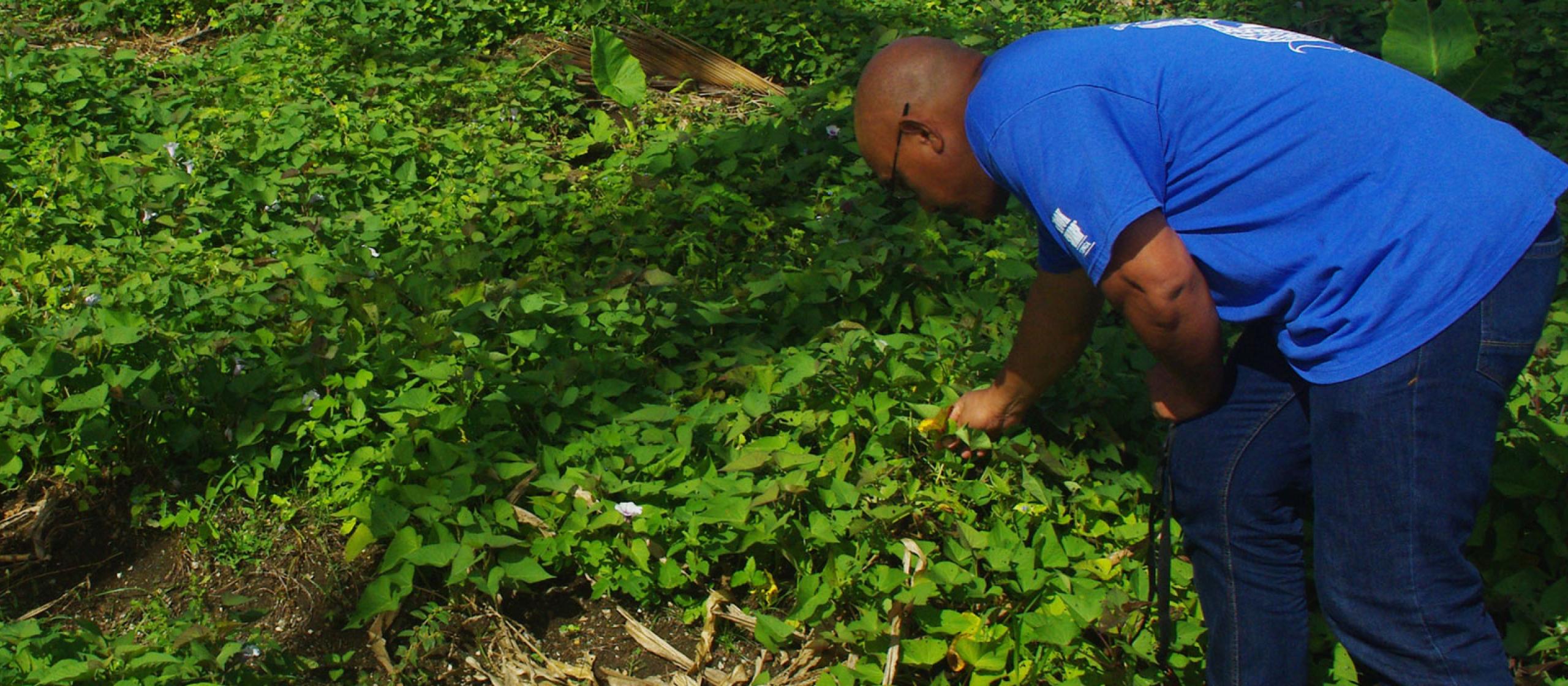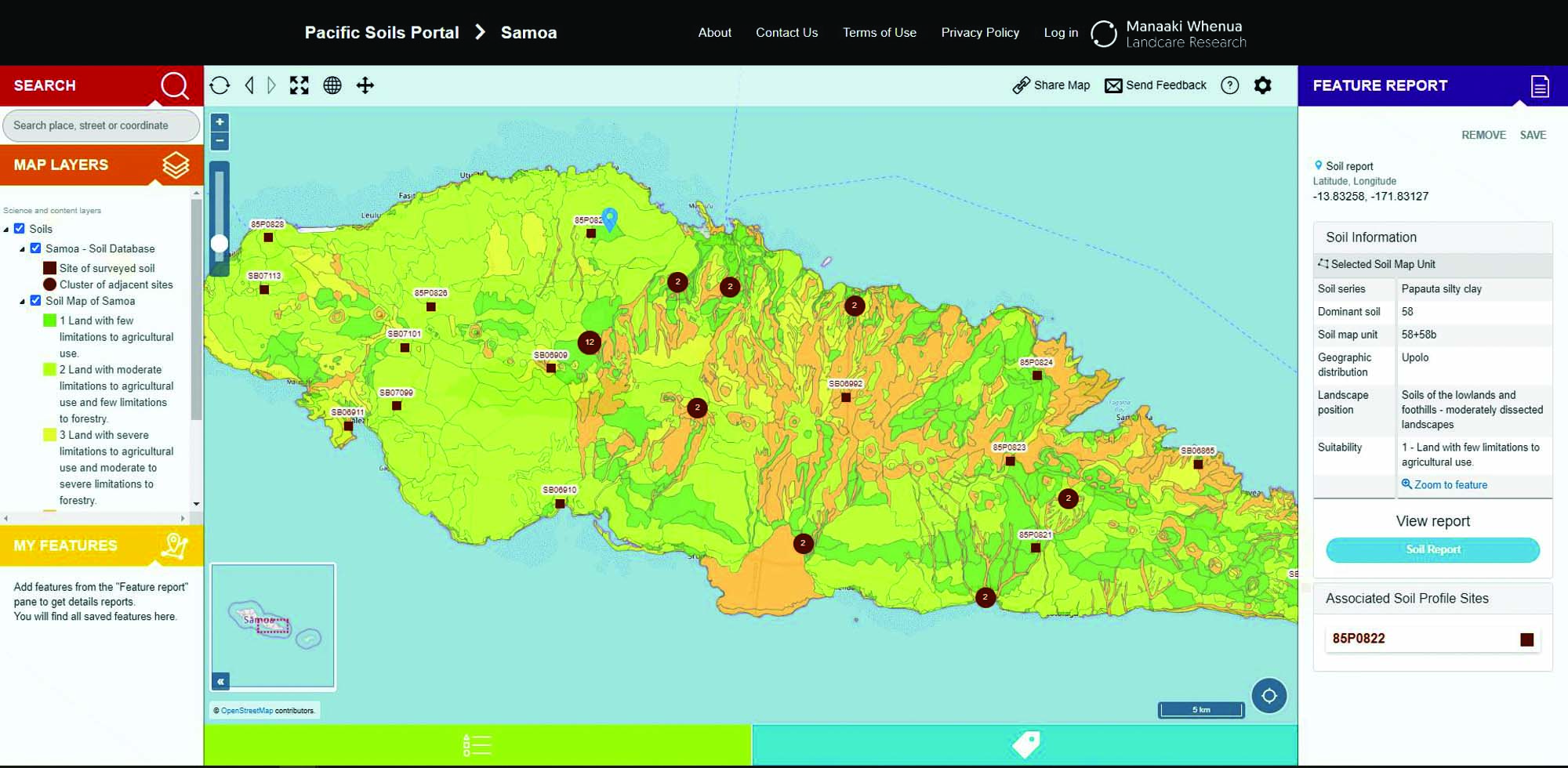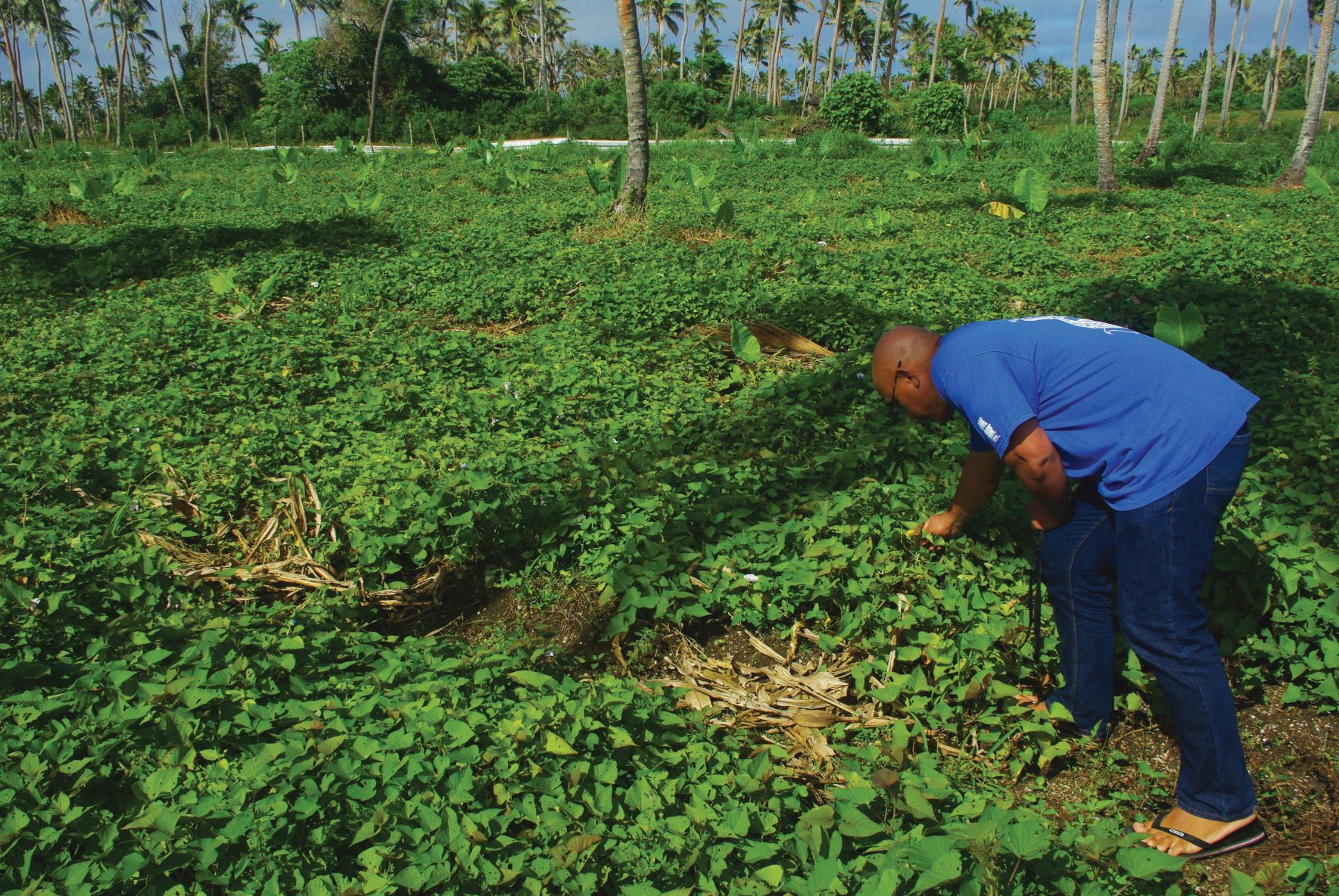A few years ago, Dr James Quilty was standing in a taro crop in Samoa, chatting with the grower about his cultivation methods and his farming ambitions. Dr Quilty noted, as they were speaking, the yellow-tinged leaves of the taro crop being symptomatic of potassium-deficient soils.
As the ACIAR Research Program Manager, Soil and Land Management, he had a keen interest in this issue. Dr Quilty asked if the farmer used fertiliser, given he had just won the best taro prize in his local agricultural show.
‘No’ was the unsurprising answer. As the conversation continued, the farmer lamented how the taro plants used to be twice as tall when he was a boy.
This conversation revealed 2 important facts: crop growth and soil nutrition were in decline, but farmers were not linking the 2.
What was needed was soil test data and a way to show farmers the connection between this data, their soil management, the diminishing performance of their crops over time and the long-term impacts for their families and their children.
Fast forward 3 years to the development of the Pacific Soils Portal. Created through a CSIRO-led ACIAR-supported project, the portal brings together 50 years of soil test data from Samoa, Fiji, Tonga, Kiribati and Tuvalu into an online data map.





